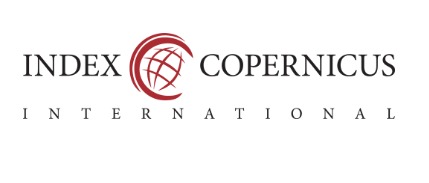Structural equation modelling of reality TV shows in the Philippines vis a vis people’s phenomenological views
Abstract
Aim: This research aimed to verify a hypothesized model describing the assumed nature of reality TV shows in the Philippines by examining latent constructs like the concepts of artistry, potential commercial value, and merit evaluation. This research, which used a mixed-methods methodology, also sought to characterize and comprehend the participants’ perspectives on the multifaceted character of reality TV in the country.
Methodology: Purposive sampling was used to select 422 participants from Davao City’s educational institutions. We used a custom-made 5-point Likert questionnaire with 47 questions for this survey. Meanwhile, a focus group consisting of eight people was assembled (FGD).
Findings: The results showed that the criteria used in reality TV shows are largely responsible for defining the concept of artistry, although the judges’ credibility is still an important consideration. The contestant’s marketability is heavily influenced by his character. Viewers’ approval and the television networks’ preference are both important factors in determining quality.
Novelty/Implications: This research examined the best-fit model of merit evaluation and phenomenological perspectives on Philippine reality television, highlighting the genre’s high levels of concept of artistry, commercial value, and merit evaluation.
References
Andrejevic, M. 2004. Reality TV: The Work of being Watched. Lanham, MD: Rowman and Littlefield.
Ashaari, M. F. 2017. “The Adoption and Adaptation of Online Learning Models in the Framework of Online Da’wah.” International Journal of Humanities, Arts and Social Sciences 3(1): 1-8.
Aufderheide, P., Jaszi, P., and Chandra, M. 2009. “Honest Truths: Documentary Filmmakers on Ethical Challenges in their Work”. Retrieved January 16, 2015 (https://goo.gl/5VXTdF.)
Basoglu, B. 2017. “YouTube or Writing Tube: A Technology-Mediated Learning Tool for TESOL.” International Journal of Humanities, Arts and Social Sciences 3(3): 98-105.
Biressi, A., and Nunn, H. 2012. Celebrity Hybridity and Packaged Demotic Culture. Newyork, NY: Columbia University Press.
Bondebjerg, I. 2002. “The Mediation of Everyday Life: Genre, Discourse and Spectacle in Reality TV.” pp. 159-192 in Realism and âAIJRealityâ ̆ A ̆ ̇I in Film and Media, edited by A. Jerslev. Copenhagen, Denmark: Mu- seum Tusculanum Press.
Caillois, R. 2001. Man, Pay, and Games. Urbana, IL: University of Illinois Press.
Christians, C. G., Fackler, M., Richardson, K., Kreshel, P., and Woods, R. H. 2015. Media ethics: Cases and Moral Reasoning. Newyork, NY: Routledge.
Cuala, A. 2011. “PGT Season 3 Grand Finals Winner Result Creates Controversy Among Fans, El Gamma Penumbra favored”. Retrieved January 17, 2013 (https://goo.gl/JkT6Hh).
Fetveit, A. 1999. “Reality TV in the Digital Era: A Paradox in Visual Culture?” Media, Culture & Society 21(6): 787-804.
Hall, A. 2009. “Perceptions of the Authenticity of Reality Programs and their Relationships to Audience Involvement, Enjoyment, and Perceived Learning.” Journal of Broadcasting and Electronic Media 53(4): 515-531.
Hill, A. 2007. Restyling factual TV: Audiences and News, Documentary and Reality Genres. London, UK: Routledge.
Kilborn, R. 2003. Staging the Real. Manchester, UK: Manchester University Press.
Mast, J. 2016. “Negotiating the ‘Real’ in ‘Reality Shows’: Production Side Discourses Between Deconstruction and Reconstruction.” Media, Culture and Society, 38(6): 901-917.
Mast, J. 2016. “The Dark Side of Reality TV: Professional Ethics and the Treatment of Reality Show Participants.” International Journal of Communication 10(22): 2179-2200.
Mills, N. 2004. “Television and the Politics of Humiliation.” Dissent 51(3): 79-81.
Nabi, R. L., Biely, E. N., Morgan, S. J., and Stitt, C. R. 2003. “Reality-Based Television Programming and the Psychology of its Appeal.” Media Psychology 5(4): 303-330.
Nuffnang 2011. “Nuffnang Asia-Pacific Blog Awards 2011”. Retrieved January 16, 2013 (https://goo.gl/ZfuDps).
Pitts, L. 2005. “Reality Television”. Retried January 16, 2013 (https://goo.gl/KVzLf1).
Plantinga, C. 1997. Rhetoric and Representation in Nonfiction Film. Cambridge, UK: Cambridge University Press.
Realtity Ravings. 2011. “Reality TV Insights Survey-Product Placement In Reality TV Shows Works.” Retrieved on January 17, 2013 (https://goo.gl/tDReiJ).
Reality TV Section. 2013. “Reality TV Prize Money and Perks.” Retrieved January 17, 2013 (https://goo.gl/FMVSdd)
Reiss, S., and Wiltz, J. 2010. “Why America Loves Reality TV”. Retrieved on January 17, 2013 (https://goo.gl/TZ1f7U)
Reiss, S., and Wiltz, J. 2004. “Why People Watch Reality TV.” Media Psychology 6(4): 363-378.
Slezak, M. 2009. “Collide Magazine 2012 The Reality of Reality TV”. Retrieved January 25, 2014 (https://goo.gl/rh15Hj)
Vreeswijk, G. A., and Prakken, H. 2000. “Credulous and Sceptical Argument Games for Oreferred Semantics.” Presented at the 7th European Workshop on Logic for Artificial Intelligence, Malaga, Spain.
Wong, J. 2001. “Here’s looking at you: Reality TV, Big Brother, and Foucault.” Canadian Journal of Communication 26(4): 489-501.

This work is licensed under a Creative Commons Attribution-NonCommercial 4.0 International License.












.png)










